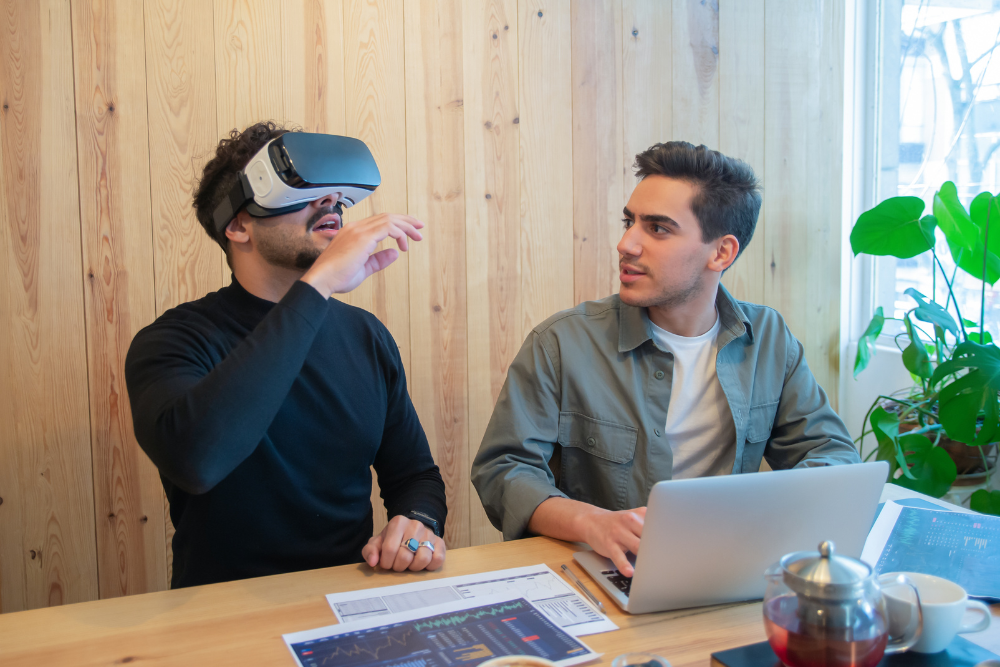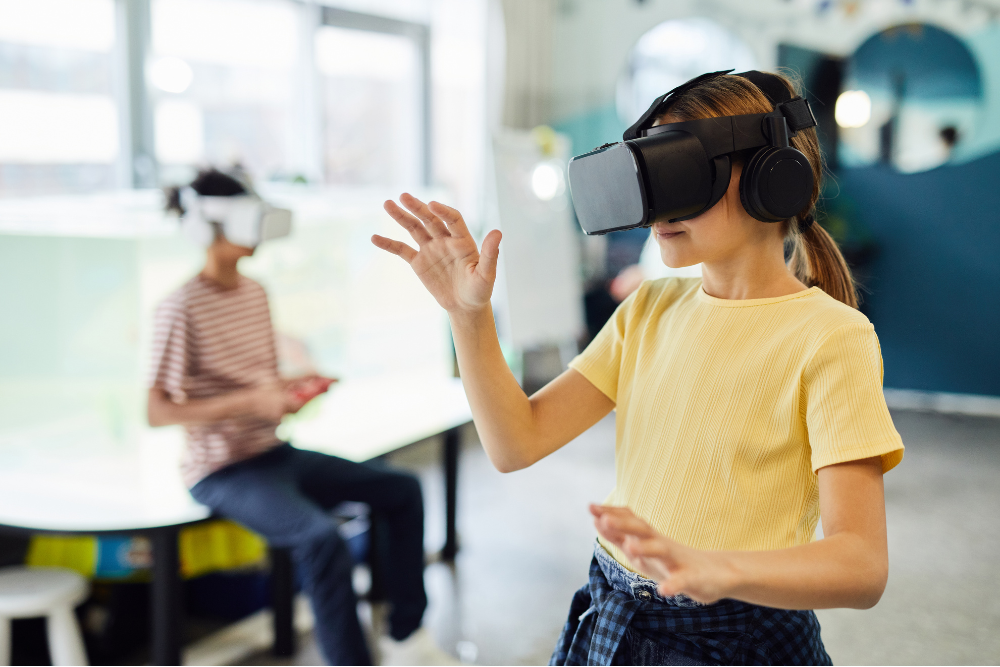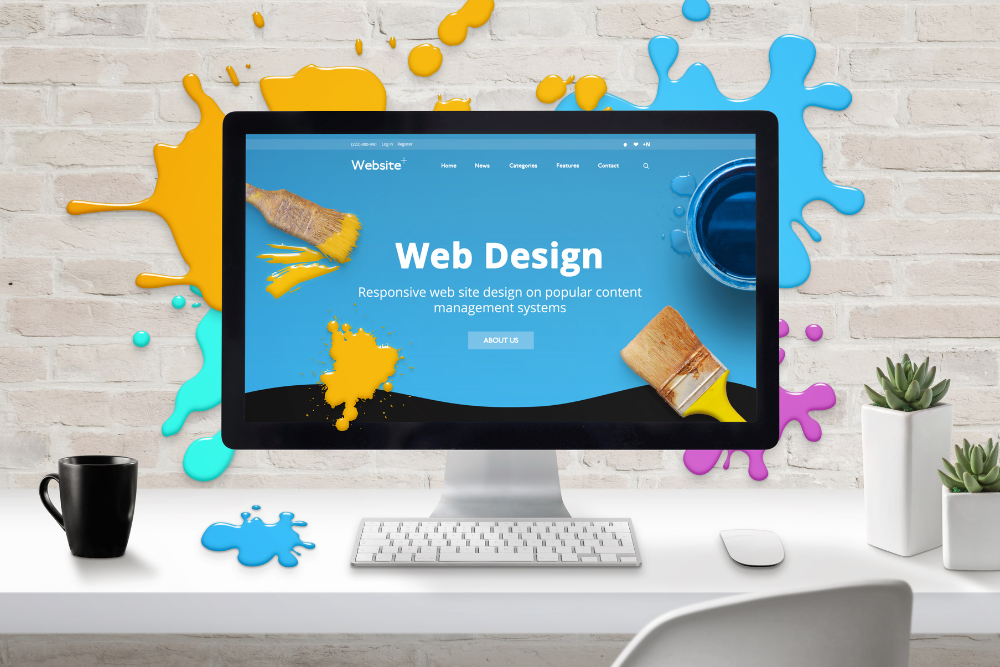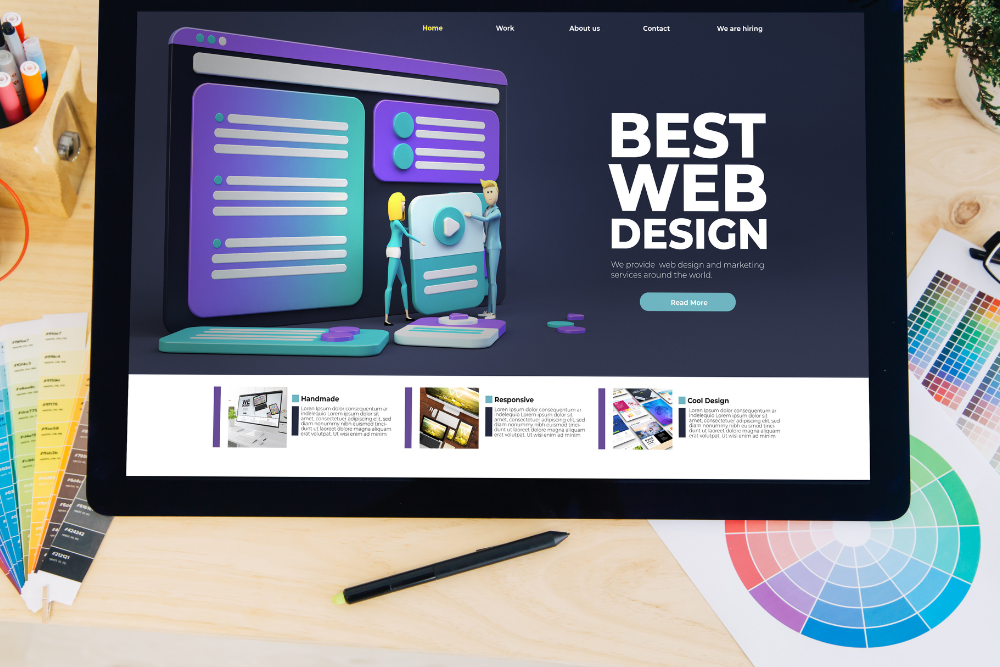Augmented Reality (AR) is no longer just a futuristic concept—it is reshaping the way users interact with websites. From eCommerce stores allowing customers to visualize products in their homes to interactive landing pages that engage users like never before, AR web design is revolutionizing the digital landscape. Businesses that embrace AR technology can enhance user experience, increase engagement, and stay ahead of the competition.
In this article, we explore how AR is transforming web design, its benefits, and what it means for WordPress development, Shopify eCommerce sites, Laravel projects, and React Native app development.
1. What is Augmented Reality (AR) in Web Design?

Augmented Reality overlays digital elements onto the real world, allowing users to experience an interactive, enhanced version of reality. Unlike Virtual Reality (VR), which creates an entirely digital environment, AR enhances the real world by adding digital objects, animations, and information to it.
When applied to web design, AR enables users to interact with websites in new and engaging ways, making their experience more immersive and memorable. Whether it’s an eCommerce store, portfolio, or business website, AR features can increase interactivity, engagement, and conversions.
2. How AR is Changing Web Design

1. Enhanced User Engagement
Traditional websites rely on images, videos, and text to capture user interest. AR web design takes this a step further by offering immersive experiences. Users can interact with 3D models, preview products in real-world settings, or explore interactive elements that respond to movement and touch.
For example, an online furniture store can allow users to see how a sofa looks in their living room before making a purchase. This increases confidence in buying decisions, reducing return rates and boosting sales.
2. Improved Product Visualization for eCommerce
Shopify eCommerce sites and WooCommerce stores can leverage AR to showcase products in 3D. Customers can rotate, zoom, and even place objects in their space using their smartphone cameras. This gives them a better understanding of the product, leading to higher customer satisfaction and conversions.
For businesses involved in eCommerce development, integrating AR features into websites can provide a competitive edge, making products more appealing and tangible to potential buyers.
3. Interactive Storytelling & Branding
Websites can use AR elements to tell stories in a more engaging and interactive manner. Imagine a brand’s website featuring a 3D model of their product that users can interact with instead of static images. This can create memorable brand experiences, leading to higher engagement and increased time spent on the website.
This approach works exceptionally well for:
- Portfolio websites showcasing interactive design concepts
- Marketing campaigns with AR-driven storytelling
- Educational websites that provide hands-on, immersive learning experiences
4. Better User Experience with AR Navigation
AR-driven navigation makes it easier for visitors to explore websites in a more intuitive way. Instead of scrolling through traditional menus, users can point their smartphones at an area to receive interactive prompts, virtual tours, or guided assistance.
For businesses focusing on WordPress development, integrating AR-powered navigation can differentiate their websites and offer an engaging, futuristic browsing experience.
3. Benefits of AR in Web Design

Increases Engagement
AR-driven websites keep visitors engaged for longer periods, reducing bounce rates and improving the overall user experience.
Boosts Conversions
AR product visualization in eCommerce websites helps customers make better purchasing decisions, increasing sales and reducing product return rates.
Enhances User Experience (UX)
Interactive elements make browsing more dynamic, enjoyable, and intuitive, leading to higher customer satisfaction.
Differentiates Brands
With many websites looking similar, AR integration sets businesses apart, providing a competitive edge in the digital space.
Encourages Social Sharing
Users are more likely to share AR experiences on social media, leading to organic marketing and brand awareness.
4. How to Implement AR in Web Design

1. Use WebAR Technologies
WebAR allows users to access AR experiences directly from a web browser without needing a dedicated app. This makes AR integration more accessible for businesses looking to enhance their websites.
Popular WebAR frameworks include:
- 8thWall – A leading WebAR platform
- Zappar – Interactive AR experiences
- Three.js – For creating 3D models in AR
2. Integrate AR with WordPress & Shopify
For WordPress development and Shopify eCommerce sites, plugins and tools like WebAR SDKs and 3D product viewers can help seamlessly add AR capabilities.
Popular tools include:
- AR for WordPress – Enables AR features for WordPress sites
- Shopify AR – Allows Shopify store owners to add 3D product models
- React Native & Laravel Integrations – Custom-built AR experiences for mobile applications
3. Optimize for Mobile Usability
Since most AR experiences are accessed via smartphones, ensuring fast load speeds, responsive design, and intuitive navigation is crucial. Businesses must optimize websites to work seamlessly across devices to maximize AR effectiveness.
4. Challenges & Considerations
While AR web design offers incredible benefits, businesses should also be aware of some challenges:
- Performance Issues: AR features can slow down websites if not optimized properly. Using lazy loading and CDN hosting can help maintain speed.
- Cross-Browser Compatibility: AR technology may not work uniformly across all browsers. Testing on Chrome, Safari, Edge, and Firefox is essential.
- Development Costs: Custom AR integration may require specialized development, increasing initial costs. However, the long-term engagement benefits often outweigh the investment.
5. The Future of AR Web Design
With advancements in AI, 5G, and WebAR technologies, AR web design is set to become mainstream. As businesses look to increase online presence and improve customer interactions, integrating AR features will be a game-changer.
The future of AR in web design includes:
- AI-powered personalized AR experiences
- Gesture-based navigation for websites
- AR-driven shopping assistants for eCommerce
- Voice-activated AR interactions
Businesses investing in AR development now will be at the forefront of the next wave of digital transformation.
Final Thoughts
Augmented Reality in web design is no longer a trend—it’s the future. By integrating AR features into websites, businesses can create immersive user experiences, increase engagement, and boost conversions. Whether you’re in eCommerce, portfolio design, or mobile app development, leveraging AR can set your brand apart.
At Panalink Infotech, we specialize in WordPress development, Laravel solutions, Shopify eCommerce sites, and React Native app development. If you’re looking to enhance your website with AR-driven design, our team is ready to help.
Contact us today and let’s bring your website to life with AR!

